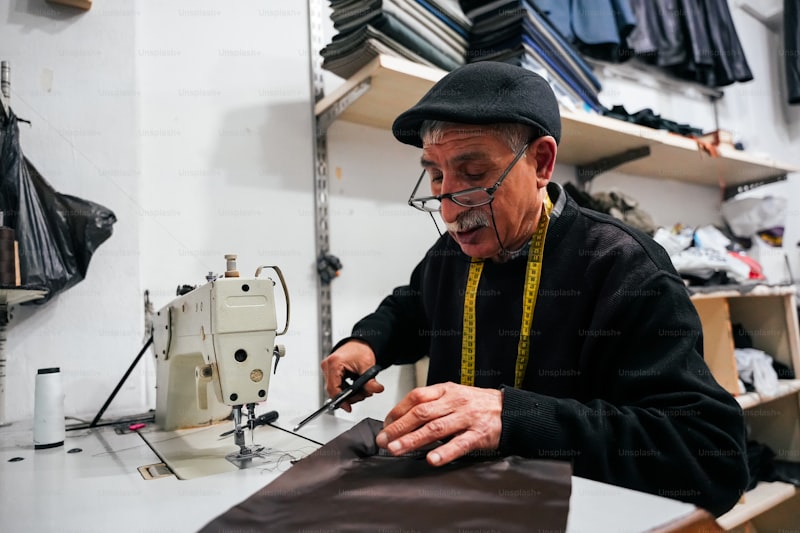Exploring the World of Local Artisans and Sustainable Fashion
Introduction to Local Artisans and Sustainable Fashion
In recent years, the fashion industry has witnessed a significant shift towards sustainability, with a growing emphasis on local artisans and craftsmanship. As consumers become more aware of the environmental and ethical implications of their purchases, the demand for sustainable fashion has soared. This article explores the intricate relationship between local artisans and sustainable fashion, offering insights into how supporting local craftspeople can lead to a more eco-friendly wardrobe.
The Rise of Sustainable Fashion
Sustainable fashion refers to clothing that is produced with minimal environmental impact and adheres to ethical labor practices. This movement encourages responsible consumption and emphasizes the importance of knowing the origins of your garments. But what exactly drives this shift?
Consumer Awareness
Today's consumers are more informed than ever about the negative impacts of fast fashion, from pollution to labor exploitation. A survey revealed that over 66% of global respondents are willing to pay more for sustainable brands, indicating a preference for quality over quantity.
Environmental Impact
The fashion industry is one of the largest polluters globally, contributing to water waste, chemical pollution, and greenhouse gas emissions. By choosing sustainable fashion, consumers can help mitigate these issues. According to a report by the World Resources Institute, sustainable practices can reduce emissions linked to clothing production by up to 30%.
Local Artisans: The Heart of Sustainable Fashion
Local artisans play a crucial role in the sustainable fashion movement. By focusing on traditional techniques and high-quality materials, artisans create unique pieces that stand the test of time. Here are some key aspects of the role of local artisans in sustainable fashion:
| Aspect | Description |
| Craftsmanship | Local artisans possess exceptional skills passed down through generations, ensuring each piece is made with care and precision. |
| Quality over Quantity | Artisanal products are often made in small batches, prioritizing quality and durability over mass production. |
| Supporting Local Economies | By buying from local artisans, consumers contribute to their communities and help preserve traditional crafts. |
| Eco-Friendly Practices | Many local artisans use sustainable materials and environmentally friendly processes, reducing their carbon footprint. |
Benefits of Supporting Local Artisans
Supporting local artisans not only promotes sustainability but also offers numerous benefits to consumers. Here are just a few:
Unique Products
When you buy from local artisans, you often receive exclusive, one-of-a-kind items that you won't find in mass-produced fashion. Each piece tells a story, adding character and individuality to your wardrobe.
Connection to the Craft
Purchasing handmade goods from artisans creates a direct connection between the maker and the consumer. Understanding the skill and effort behind every piece can lead to a greater appreciation for the art of fashion.
Environmental Contribution
By choosing local over global, you minimize the carbon footprint associated with shipping and production. Local artisans often use locally sourced materials, reducing transportation emissions and promoting sustainability.
Challenges Facing Local Artisans
Despite the benefits, local artisans face several challenges that can hinder their growth and visibility:
Market Competition
The rise of fast fashion has created a market flooded with cheap, trendy clothing, making it difficult for local artisans to compete. Many consumers prioritize price over sustainability, posing a challenge to those creating quality handmade items.
Lack of Awareness
Many consumers are unaware of the impact of their purchasing decisions, often opting for mainstream brands without recognizing the benefits of supporting local artisans. Increased awareness campaigns and education are essential for fostering a shift in consumer behavior.
Tips for Supporting Local Artisans
Here are some practical tips for supporting local artisans and embracing sustainable fashion:
Research Local Artisans
Spend time researching artisans in your community, whether through online platforms, local craft fairs, or social media. Websites like Etsy and local artisan directories can connect you with craftspersons near you.
Engage with Your Community
Attend local markets or craft fairs to meet artisans in person. This engagement creates opportunities for collaboration and community building, enhancing the local economy.
Choose Quality Over Quantity
When shopping, prioritize quality garments made by local artisans rather than fast fashion items. A well-made piece may cost more upfront but will last longer, ultimately saving you money.
The Future of Local Artisans and Sustainable Fashion
The future looks promising for the sustainable fashion movement and local artisans. As consumer awareness continues to rise and environmental concerns become increasingly urgent, the demand for sustainable practices will grow. By supporting local artisans, consumers can make a meaningful impact on the environment while enjoying unique and beautifully crafted garments.

Conclusion
In summary, the intersection of local artisans and sustainable fashion offers a compelling narrative about ethics, craftsmanship, and environmental responsibility. By choosing to support local artisans, consumers can play an active role in the shift towards a more sustainable fashion industry. As you consider your wardrobe choices, remember the importance of quality, the richness of local crafts, and the positive impact you can have on the world. Together, we can help cultivate a future where fashion respects the planet and celebrates the artisans who create it.
Final Note: When purchasing fashion items, always consider the impact of your choices on the environment and local communities. Embrace sustainable fashion as a lifestyle and advocate for the artisans who dedicate their lives to their craft.